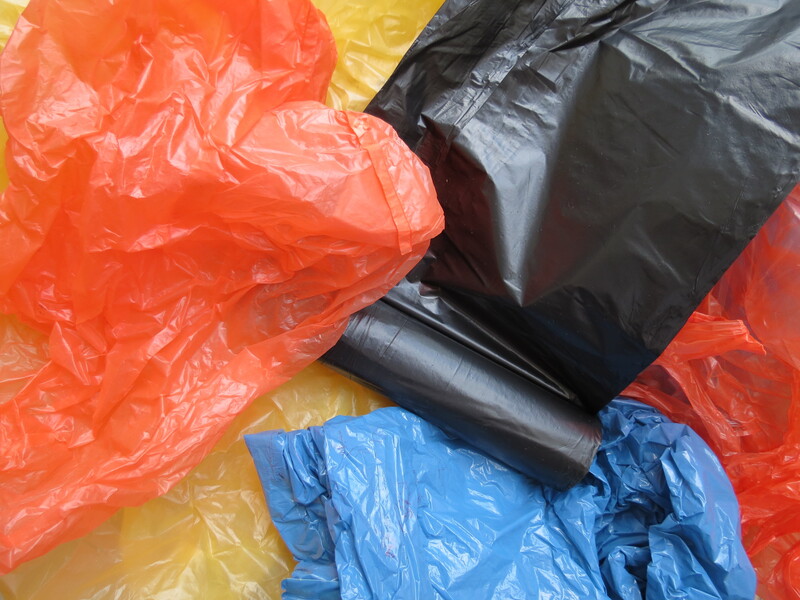Master the Art of Efficient House Packing for Your Move
Posted on 16/06/2025
Master the Art of Efficient House Packing for Your Move
When it comes to moving homes, efficient packing can make the difference between a smooth transition and utter chaos. Whether you're relocating across town or embarking on a long-distance move, learning how to pack your house efficiently is a skill worth mastering. In this guide, we'll explore expert strategies, organizational tips, and clever hacks so you can master the art of efficient house packing for your move and enjoy a hassle-free experience.
Why Efficient House Packing Matters
Efficient packing isn't just about saving time; it's about preventing damage, reducing stress, and making the whole process easier from start to finish. Here's why efficient home packing is essential:
- Saves valuable time on moving day by having everything organized.
- Reduces the risk of damage to belongings during transit.
- Makes unpacking much simpler and faster in your new home.
- Lowers moving costs by optimizing box sizes and weight.

Preparing to Pack: The Pre-Packing Phase
1. Plan Your Packing Timeline
Start by outlining a realistic packing schedule. A well-planned timeline ensures you won't be overwhelmed as moving day draws closer. Break your packing into daily or weekly tasks, focusing on one room at a time to avoid last-minute chaos.
2. Declutter Ruthlessly Before Packing
Decluttering is a crucial step in efficient house packing for your move. The less you bring, the easier and cheaper your move becomes. Sort your belongings into categories:
- Keep (essential and cherished items)
- Donate (items in good condition you no longer need)
- Sell (valuable items for extra moving funds)
- Recycle or Dispose (broken or unusable items)
Remember: every item you eliminate is one less thing to pack!
3. Gather Quality Packing Supplies
- Sturdy boxes in various sizes
- Bubble wrap, packing paper, or foam peanuts for cushioning
- Packing tape and dispenser
- Markers or colored labels for easy box identification
- Plastic bags for small parts or hardware
- Stretch wrap for protecting furniture
- Scissors, box cutters, and cleaning supplies
How to Master House Packing Efficiency
1. Start with Least Used Rooms
Begin packing rooms that see the least daily use, like attics, basements, guest rooms, or storage closets. Working from least essential to most essential rooms means daily living isn't disrupted as you approach moving day.
2. Use the Right Size Boxes
- Small boxes: Best for books, tools, or heavy items.
- Medium boxes: Ideal for kitchenware, small appliances, or shoes.
- Large boxes: Use for bedding, pillows, or bulky but lightweight items.
Avoid overpacking boxes; keep them at a manageable weight to prevent injury and box breakage.
3. Label Boxes Strategically
Label each box clearly on multiple sides with its destination room and contents.
- Use colored stickers or tape for quick visual identification.
- Number boxes and keep a spreadsheet listing the contents (for extra organization).
- Mark boxes containing fragile items with "FRAGILE" and arrows indicating upright position.
4. Master Packing Techniques Room by Room
Kitchen Packing Tips
- Wrap each dish individually with packing paper or bubble wrap.
- Pack plates vertically to minimize risk of breakage.
- Fill empty gaps with towels or crumpled paper to prevent shifting.
- Bundle utensils together with rubber bands; pack in labeled bags.
- Use original boxes for appliances if possible.
- Dispose of or donate opened food; seal unopened items in plastic bags.
Living Room & Bedroom Packing Tips
- Disassemble furniture as needed; keep hardware in labeled bags taped to furniture.
- Wrap artwork or mirrors with bubble wrap and cardboard corners for extra protection.
- Pack clothes in suitcases, wardrobes, or rolling duffels.
- Use vacuum-seal bags to compress bulky bedding.
- Remove lampshades and bulbs; pack separately for safety.
Bathroom Packing Tips
- Seal lids on toiletries with tape or place in zip-lock bags to prevent leaks.
- Dispose of expired medications safely.
- Pack towels and linens last--they can also provide extra cushioning for fragile items.
Garage & Utility Packing Tips
- Drain fuel from lawn equipment and power tools before moving.
- Wrap sharp tools in towels or bubble wrap for safety.
- Sort hazardous materials separately for safe disposal (paint, chemicals, etc.).
5. Maximize Box Space
Don't waste space--fill gaps with smaller items (socks, towels, packing paper). Never leave boxes half empty as they may collapse under weight.
6. Make Use of What You Already Have
- Suitcases, hampers, laundry bins, and duffel bags can double as moving containers.
- Use linens, t-shirts, and blankets as packing materials for fragile items.
Efficient Packing Hacks for a Smooth Move
1. Create a Moving Essentials Kit
Pack a "first-night" box with essentials you'll need right away (toiletries, snacks, chargers, medications, bedding, clothes, important documents). This kit should stay with you during the move.
2. Take Photos for Easy Reassembly
Before disassembling electronics or furniture, photograph cord setups and furniture screws. This visual guide will make reassembly in your new home much easier.
3. Use the Drawer Trick
Leave lightweight, non-fragile items in drawers. Remove each drawer, wrap it in plastic wrap, and transport separately. This saves time and boxes!
4. Color Code Every Room
Assign a different color label or tape to each room in your new house. Movers or helpers will quickly know where each box belongs.
5. Avoid Packing Air
Fill every inch of box space--but don't make them too heavy. Packing tightly prevents items from shifting and breaking during transport.
Common House Packing Mistakes to Avoid
- Procrastinating until the last minute
- Overfilling boxes, making them too heavy to lift
- Mixing items from different rooms in one box (leads to confusion)
- Neglecting to label boxes thoroughly
- Forgetting to measure furniture and doorways for a smooth move-in
- Ignoring insurance for valuable items during the move
How to Pack Fragile Items Like a Pro
General Tips for Packing Fragiles
- Use smaller boxes for fragile items
- Double tape box bottoms for added strength
- Wrap each item individually, using multiple layers for glass and ceramics
- Mark the box "fragile" on all sides and top
- Don't stack other boxes on top of fragile boxes
Specialty Fragile Packing: TVs, Artwork, Antiques
Whenever possible, use original boxes with foam inserts for TVs and artwork. If not, purchase specialty boxes that fit the item snugly, packed with bubble wrap or foam corners. Antiques may need to be custom-crated for added safety.
Efficient Packing and Moving with Kids and Pets
- Pack a separate essentials kit for children (favorite toys, snacks, comfort items).
- Arrange for pet care on moving day--moving is stressful for animals!
- Get kids involved in color coding or labeling boxes for their rooms for a fun, engaging experience.
When to Consider Professional Packing Services
If your move is large, long-distance, or includes specialty items, hiring professional packers could be a wise investment. Professional movers offer:
- Expert packing skills and proper materials
- Time-saving solutions for busy families or individuals
- Insurance for high-value or fragile belongings

After the Move: Unpacking Efficiently
1. Start with Essentials
First, open the "moving essentials kit" to get through your first night. Then tackle each room systematically starting with bedrooms and bathrooms.
2. Follow Your Color Coding and Labels
With efficient packing, every box is clearly labeled. Unpack by room and delegate boxes for a team effort.
3. Take Your Time
Efficient unpacking doesn't mean rushing. Focus first on items you need immediately, then work your way through non-essentials. Recycle or reuse boxes and packing materials when finished.
Conclusion: Make Moving a Breeze with Efficient House Packing
Packing your house for a move doesn't have to be stressful or time-consuming. By learning to master efficient house packing for your move, you'll save time, protect your possessions, and make settling into your new home a joyous adventure rather than a dreaded chore.
Remember to plan ahead, declutter first, use high-quality supplies, and pack smart room by room. Whether you do it yourself or hire professional help, following these house packing tips and techniques will transform your next move. Happy moving!






